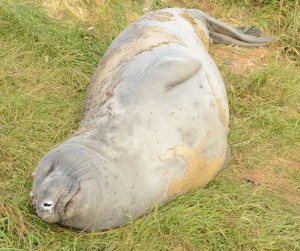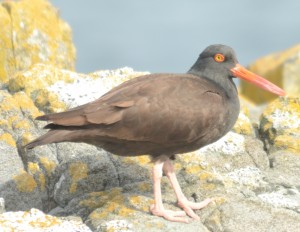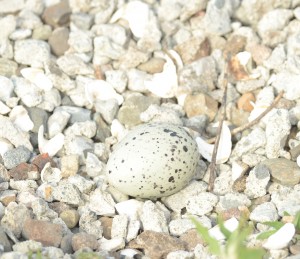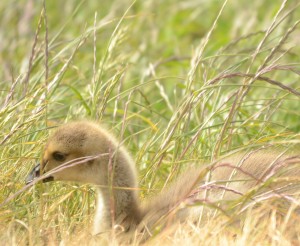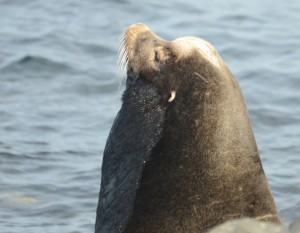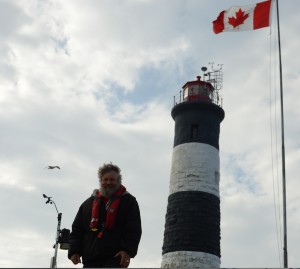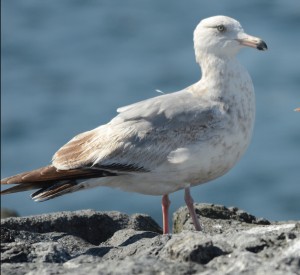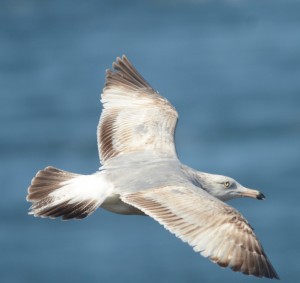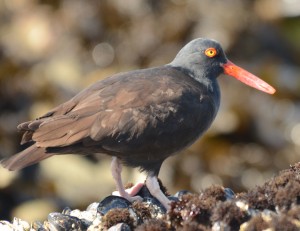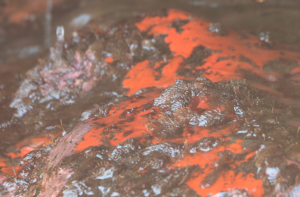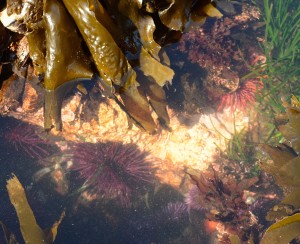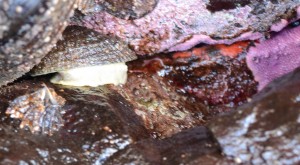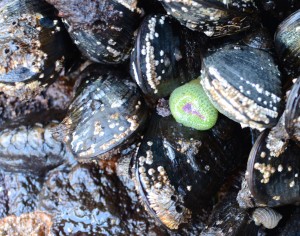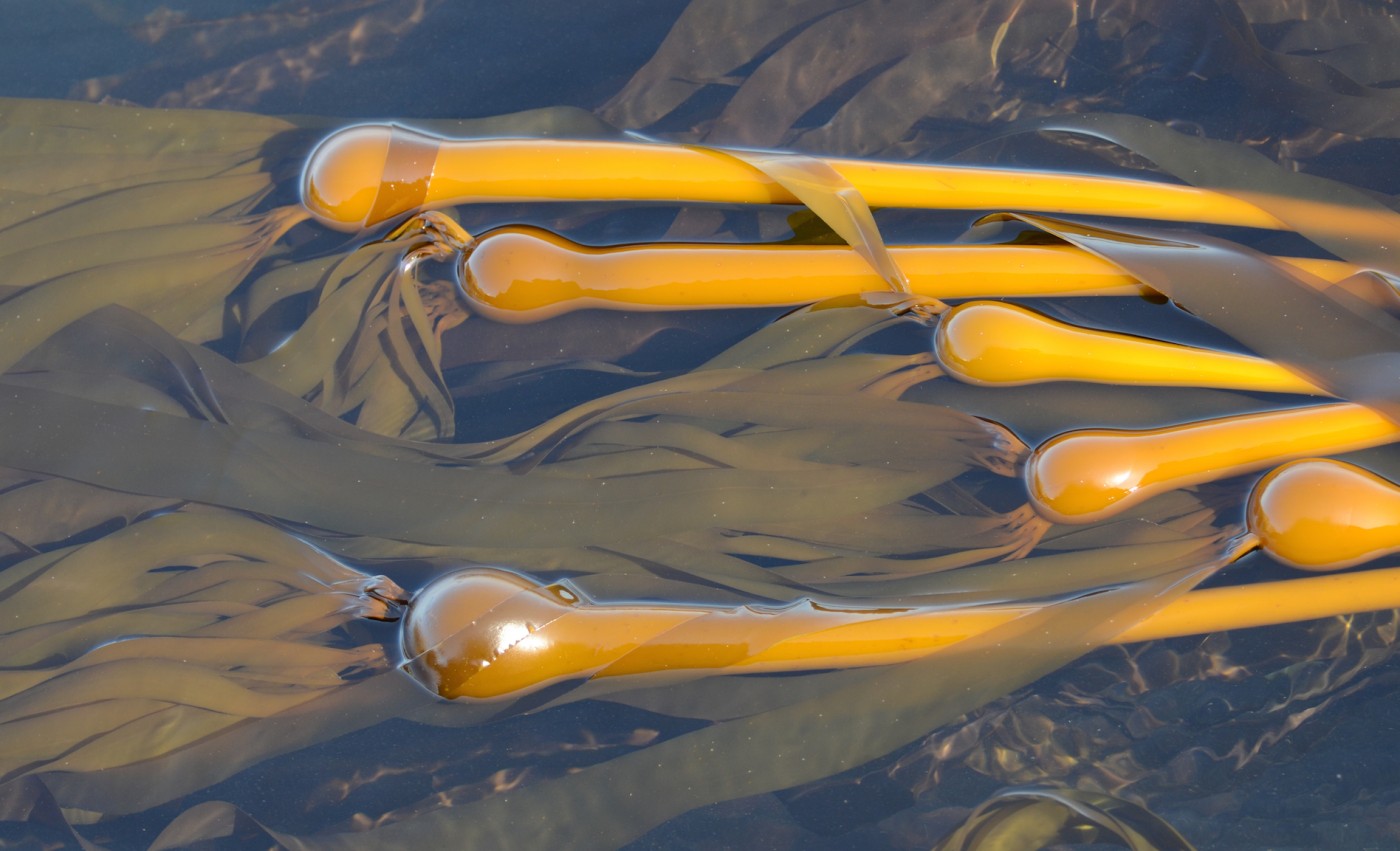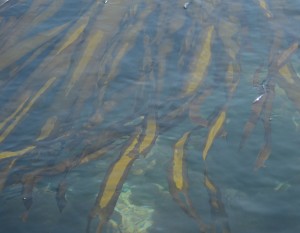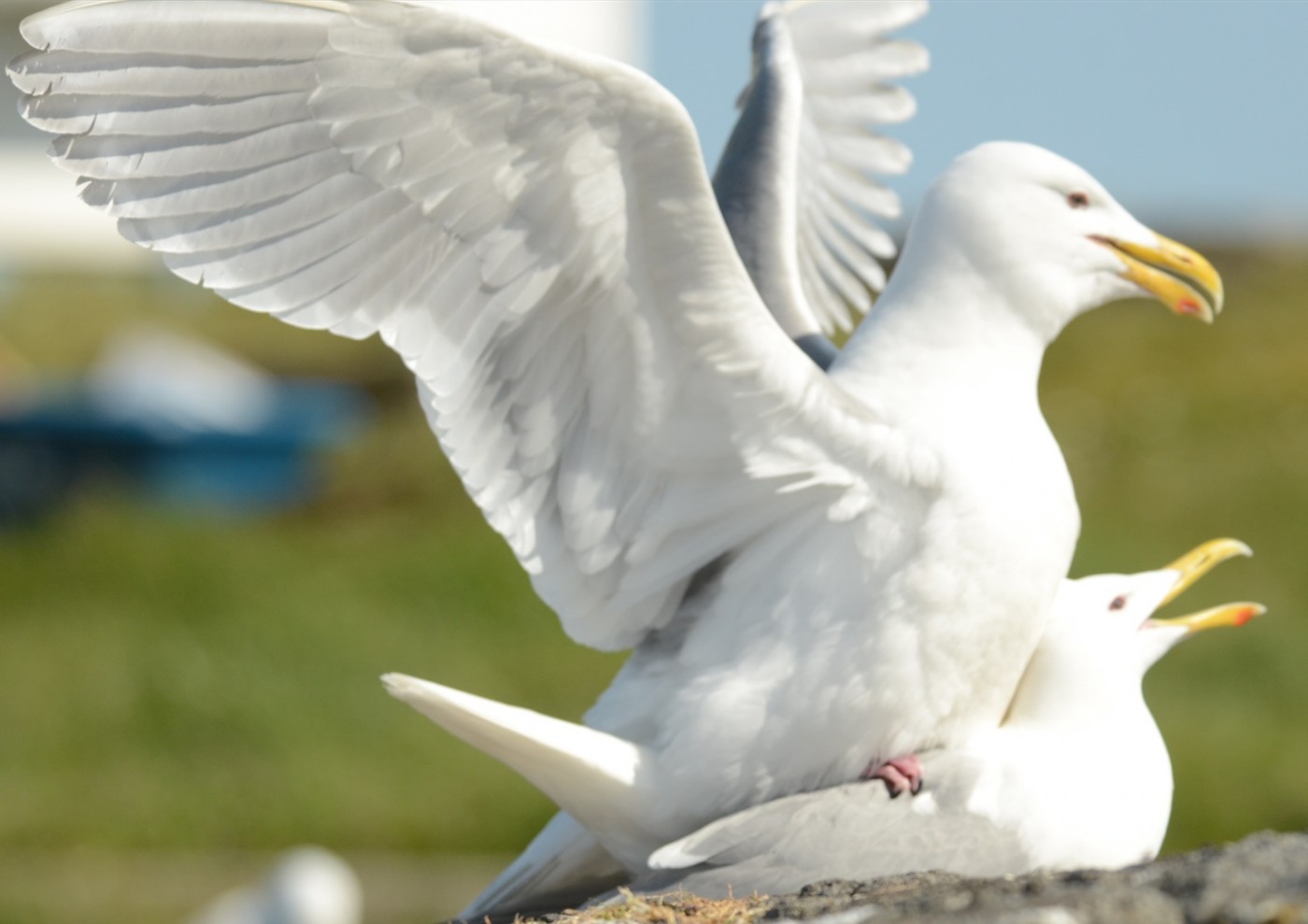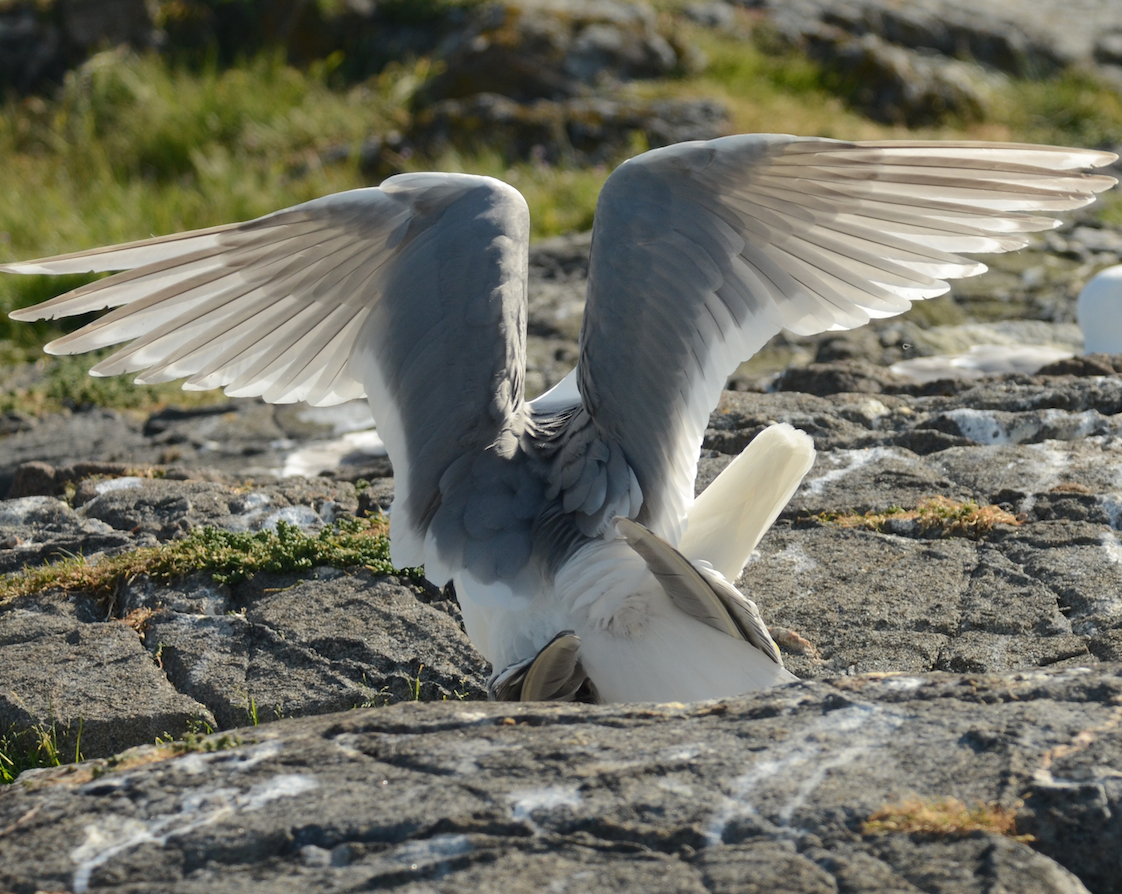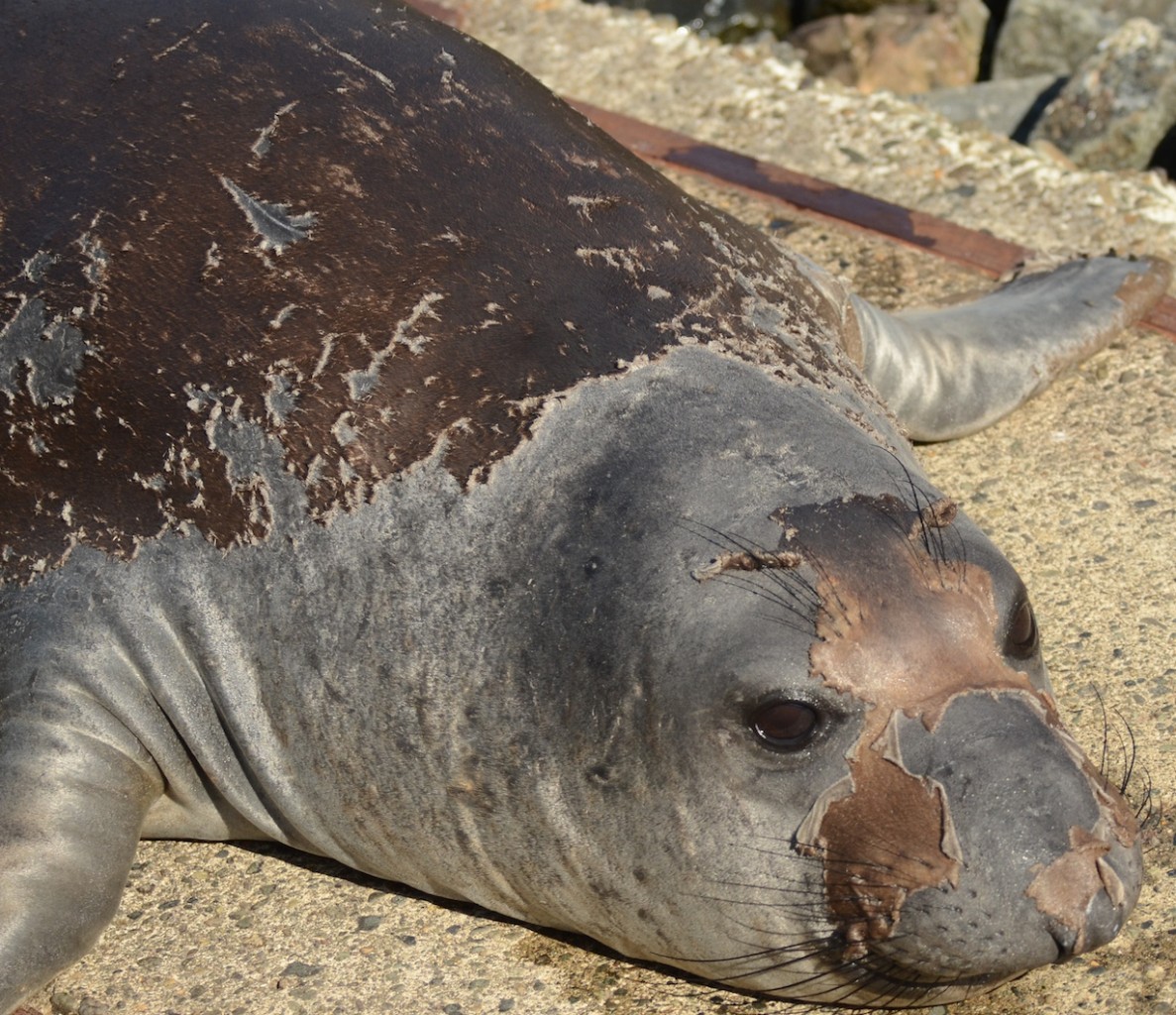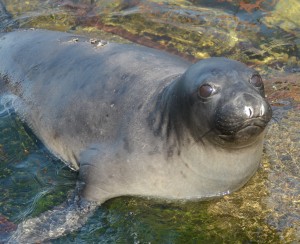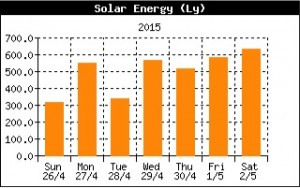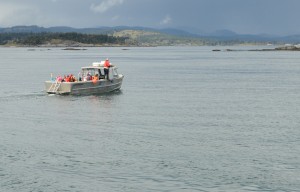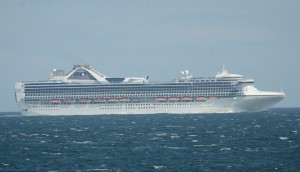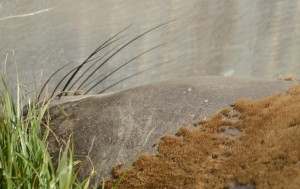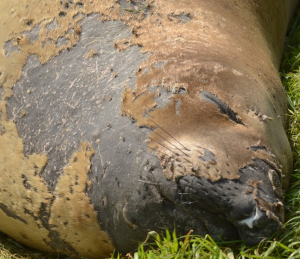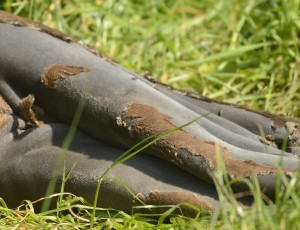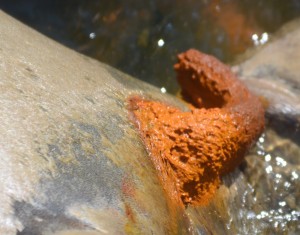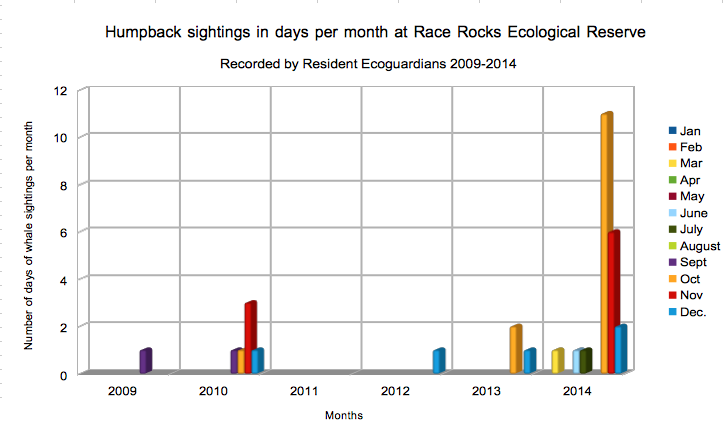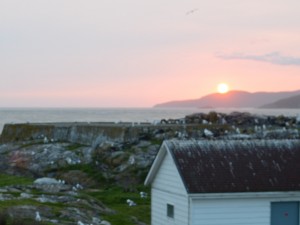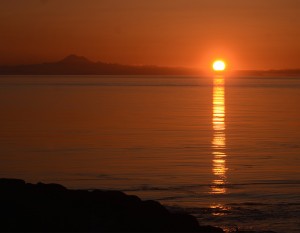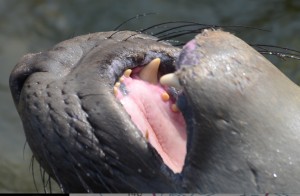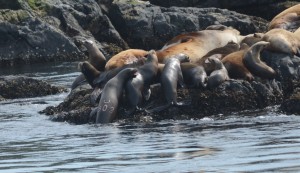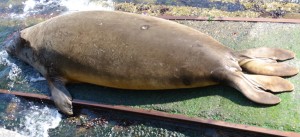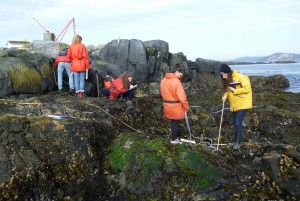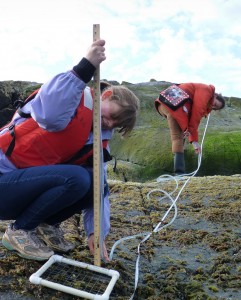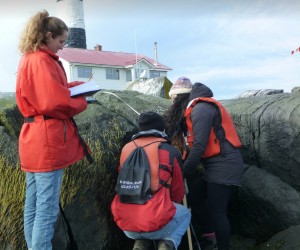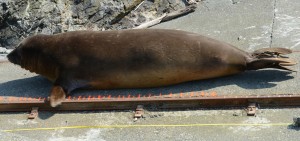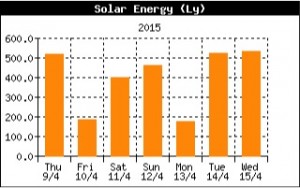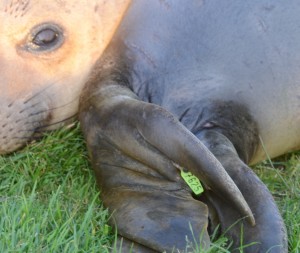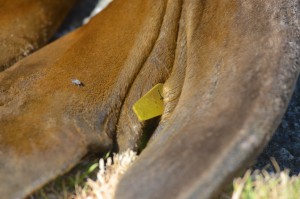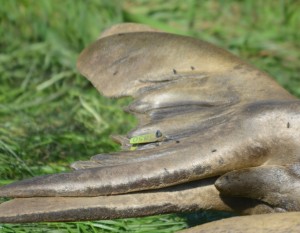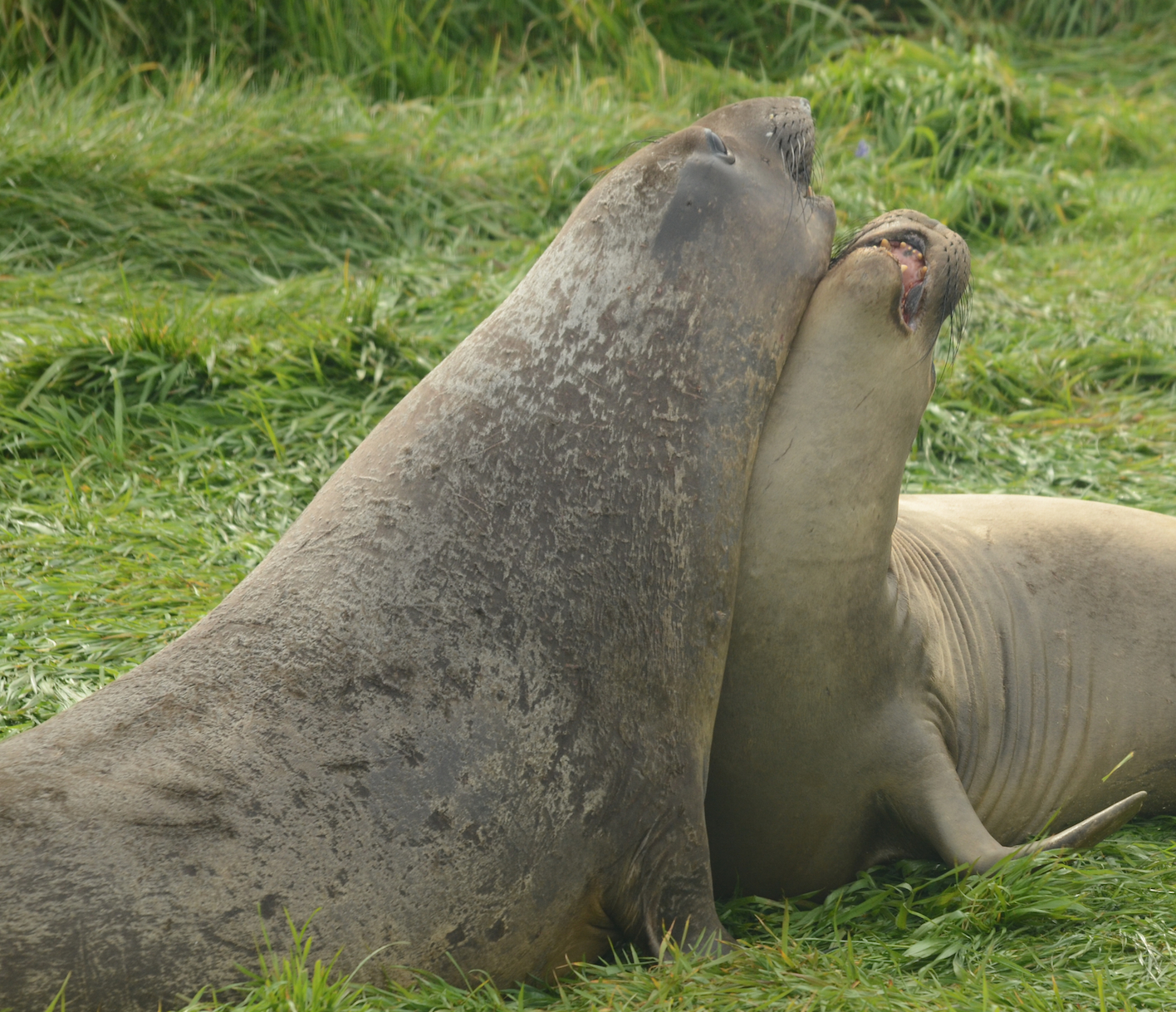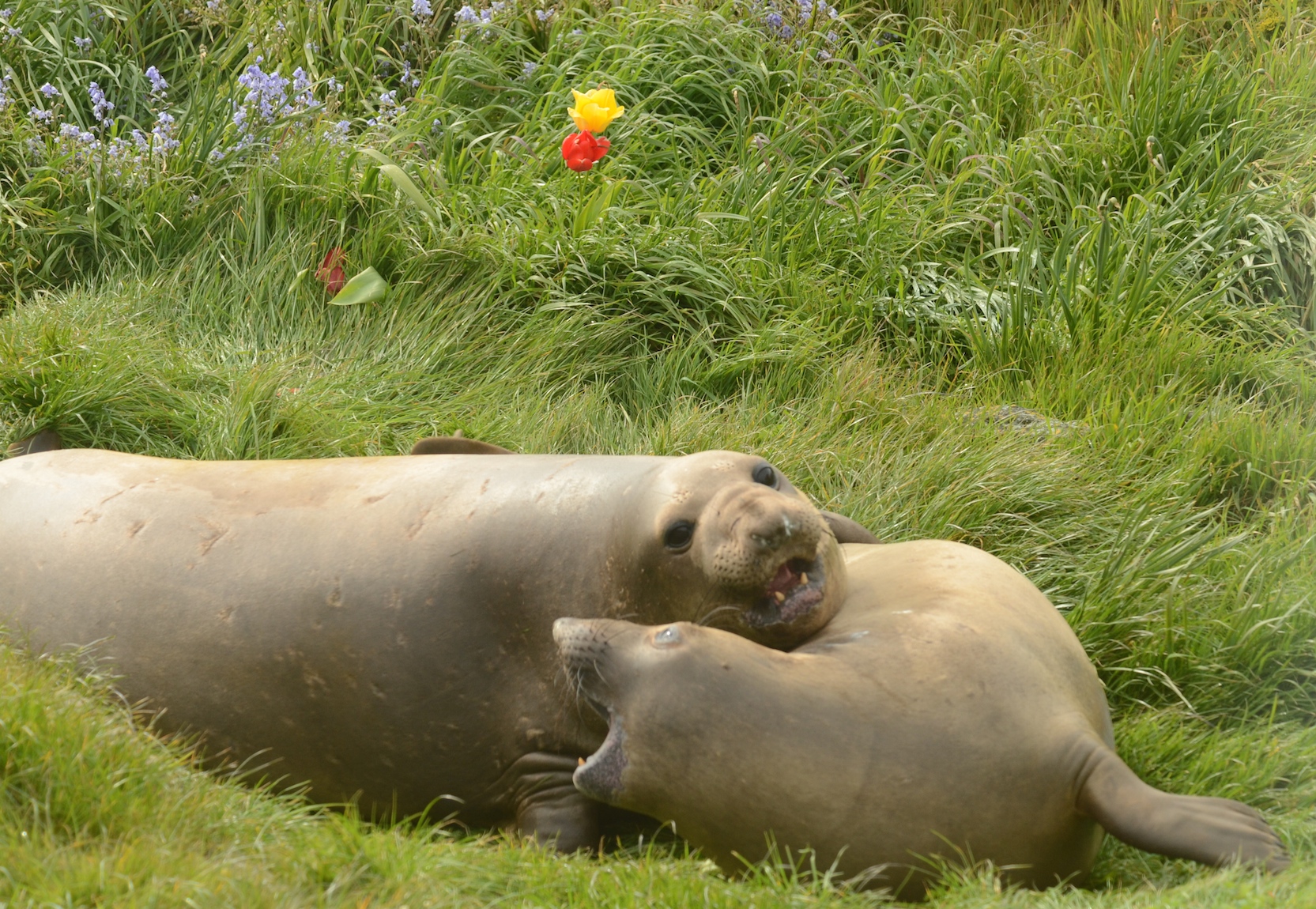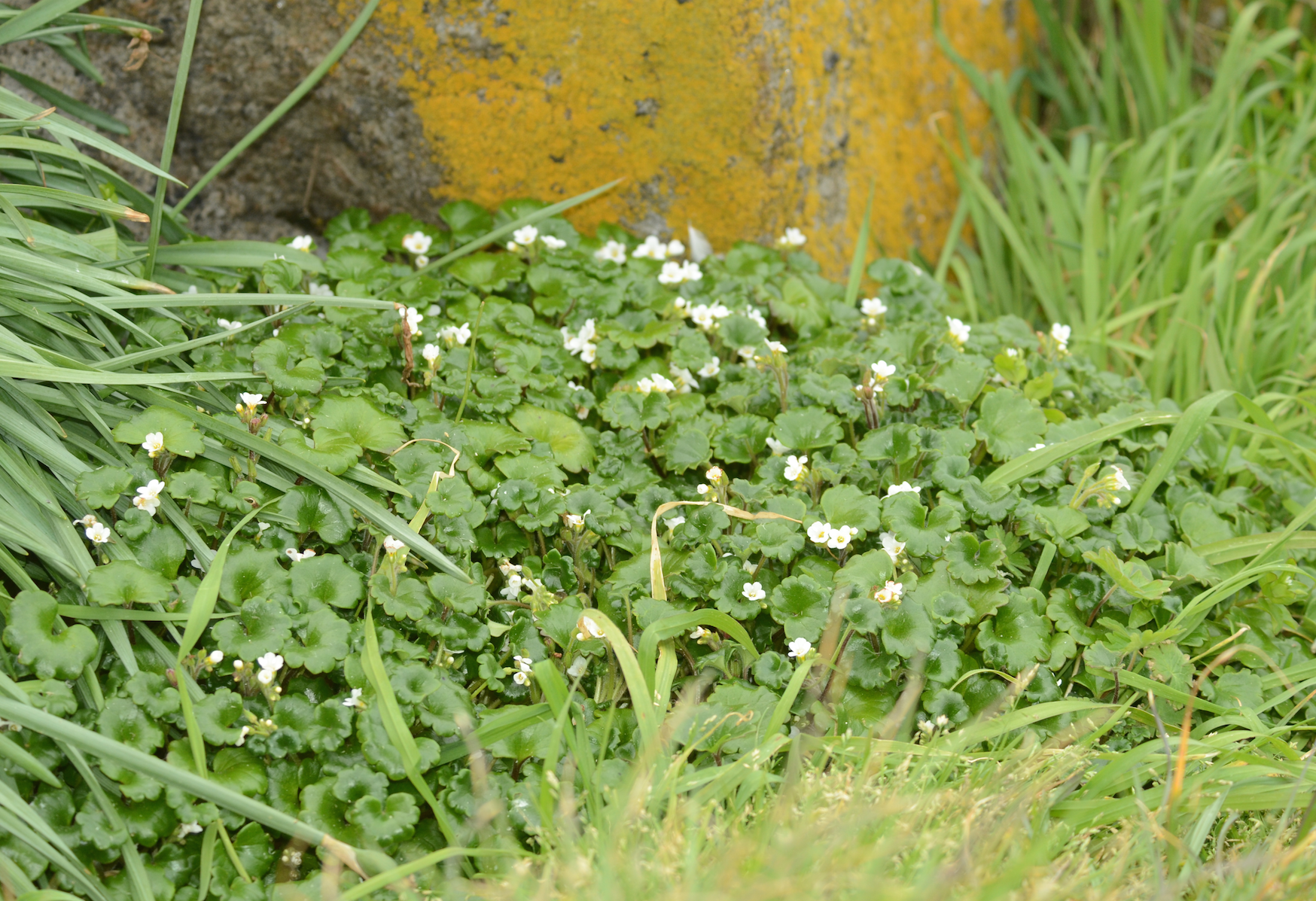Again it was a day dominated by the west and west-southwest winds. It was blowing 30 to 35 knots at dawn but the velocity subsided and most of the day it blew 20 to 25 knots. Skies were partially overcast and as predicted there were a few showers. Air temperature remains low, and is not much different than flooding sea surface temperature at ~ 9.7 oC. ranging between 10 oC and 12 oC .The wind is also chilling and today had the highest wind speeds of the week. The barometer rose today from 1008 to 1013 hPa and is dropping now while the forecast calls for gales and a gale warning has been issued. Saturday is supposed to be mainly cloudy with a 30% chance of showers.
There were four whale-watching boats observed, working in the Ecological Reserve today. No other vessels were observed in reserve.
Female Northern Elephant Seal # 5086 is on day seven of her moult now and has made great strides in losing skin during the last 24 hours. She has achieved the two thirds moulted milestone and is still grouchy.
Black Oystercatchers are without a doubt nesting now and there are eggs in their terribly spartan nests, which have none of the comforts of home like soft vegetation or down.
Some of the goslings are getting quite large and although they may be considered pesty, they are still fascinating to watch.
The California Sealions are moving back onto Great Race and I awoke to a chorus of them doing a call and response outside my bedroom window this morning.
Thanks go out to Don Stewart for spotting and identifying an Anna’s Hummingbird on Great Race today, I believe this is a new addition to the species list here.
Another thank you to Rocky Point Bird Observatory for identifying a Yellow-headed Blackbird, another possibly new bird to the island. It has been hiding in the long grass and thistles near the base of the Light Tower and it has been difficult to get a photo fast enough. Today it flew to the roof of the Energy Building which made a photo much easier.
Yesterday was census day but it was too foggy much of the day to do a good census. Here are the results from today’s census.
Northern Elephant Seals 26 (18 on Great Race, 8 on Middle Rock)
Harbour Seals 228
California Sealions 14
Northern (Stellers) Sealions 26
Canada Geese 24 (+ 21 goslings)
Harlequin Ducks 6
Pelagic Cormorants 8
Double Crested Cormorants 13
Bald Eagle total 3; 1 adult, 2 sub-adults
Black Oystercatchers 14
Kildeer 2
Pigeon Guillemots 230
Glaucous-winged Gulls total 564 (556 adults in nesting areas; 8 sub-adults in roosting/resting area)
California Gulls 6
Common Raven 1
Northwestern Crow 1
Anna’s Hummingbird 1
Yellow-headed Blackbird 1
Chores were routine today. Courtney came out with the new switch box for Camera 2 and installed it. Camera 2 is working again now but a close-up study on diatom film. Don left on Second Nature.

